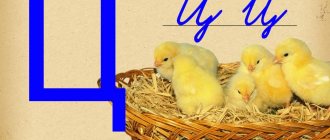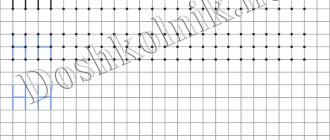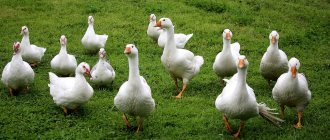Articulation gymnastics
It is best to perform all exercises in front of a mirror so that the child can see how he performs them. Each exercise is performed at least three times.
- “Window.” Pull your lips forward as much as possible and give them a square shape. Make sure that the corners of your lips do not touch each other.
- “Pancake.” Smile as widely as possible. Place your tongue on your lower lip, relax and count to 10. The tongue should stretch across the entire width of the lip, but you don’t need to reach it out too far, just enough to cover the lip.
- "Painter". Stretch your lips in a smile, open your mouth slightly, and reach your upper palate with your tongue. Make smooth movements, as if using a brush, from the teeth to the throat.
- “Brushing our teeth.” Smile and make movements with your tongue that imitate brushing your teeth. Be sure to ensure that your tongue reaches the gums and does not run along the bottom edge of the teeth.
- "Cup". Stretch your lips in a smile, stick out your tongue and reach your nose. Remain in position for up to 10 seconds.
- “Delicious food.” Open your mouth and lick your upper lip with your tongue. Movements should be made from top to bottom, not from side to side.
- "Air football" Pull out your lips with a tube. Blow on the cotton wool, but your cheeks should not swell. Blow for 10-15 seconds.
Differentiation of sounds [h]-[t], [h]-[ts], [h]-[sch]
The easiest, but at the same time effective exercise.
Pronounce the following syllables in turn:
| tsa-cha-sha-ta | tso - what - what - that | tsu - chu - schu - tu |
| tsy - chi - cabbage soup - ti | tse -che - more - those | sha - cha - tsa - ta |
| what - what - so - then | schu - chu - tsu - tu | cabbage soup - chi - tsy - you |
| shche-che-tse-those | ats - ach - ash - at | ots - och - oshch - from |
| uts - uch - ush - ut | yats - yach - box - yat | its - ich - isch - it |
| ec - ech - yet - et | ash - ach - ats - at | oshch - och - ots - from |
| ush - uch - uts - ut | box - yach - yats - yat | isch -ich -its -it |
| yet - ech - ec - ut |
Setting the sound Ch
The sound Ch can be made in several ways:
- Start by pronouncing the soft sound t. Pronounce it quickly. In this case, the tongue should touch the tips of the upper teeth, then the tongue is slightly curled, as if stroking the bases of the upper teeth. At the same time, the corners of the lips are stretched into a smile.
- Alternately name the sounds t and sh. Do it quickly. At the same time, the lips are stretched into a smile again.
- To find the hole between the teeth from the inside, you can use a piece of paper. First, the hole is felt with your hands, and then paper is applied there. To hold it, you need to apply force - this is an excellent warm-up for the tongue.
Tongue exercises
Language exercises are divided into static and dynamic.
Static complex:
- "Spatula". Relax your tongue and place it on your lower lip. Stay in this position for 10 seconds (the edge of the tongue should touch the corners of the lips).
- “The point of a needle.” Remove the tongue from the mouth, straighten and tense - the tongue at this time should be even and narrow.
- “Angry cat.” Place the tip of your tongue against your lower teeth and touch the middle of your tongue to your upper palate. Stay in the position for half a minute.
Dynamic complex:
- “Punishment for the tongue.” Stick out your tongue and place it on your lower lip. Press your tongue with your lips and say five-five-five.
- “Watch.” Stick out your tongue and stretch it to one ear, then to the other. Keep the entire speech apparatus in tension.
- “Swing”. Stick out your tongue and pull it alternately towards your nose and chin.
- "Horse". Click your tongue, imitating the blows of a horseshoe. The middle of the tongue is always pressed to the palate.
- "Little Turkeys" Run your tongue back and forth across your upper lip so that you make the sound bl-bl. The speed of movement gradually increases.
On the topic: methodological developments, presentations and notes
Individual speech therapy session at the speech center of a preschool educational institution using ICT.
The lesson is individual, conducted at the sound automation stage (w).
Clarify knowledge of the correct articulation of the sound “L”; Clarify the pronunciation of the isolated sound “L”; Strengthen the clear pronunciation of the sound “L” in syllables, words, sentences; Develop auditory comprehension; Develop.
The educational possibilities of theatrical activities are wide. By participating in it, children get acquainted with the world around them in all its diversity through images, colors, sounds, and skillfully posed questions.
Abstract – The presentation is intended for correcting sound pronunciation in preschool children, namely, for automating the sonorant sound P in words and sentences. Change slides to.
Summary of direct educational activities in a preparatory speech therapy group for children with general speech underdevelopment. Topic: Automation of the sound [h] in words and sentences. .
The lesson on sound automation [L] takes place in an entertaining way - travel. The child travels through the country of the sound “L” together with Stella the bee. For Stella, the child is throughout the century.
Individual speech therapy lesson “Automation of sound [h] in syllables, words, sentences”
Sections: Speech therapy
- Development of mobility of the articulatory apparatus, voice strength, exhalation.
- Consolidating the sound [H] in reflected repetition with a speech therapist and in independent pronunciation in syllables, words, sentences.
- Development of phonemic perception, auditory and speech attention, sound analysis.
- Enrichment and activation of vocabulary.
- Development of logical thinking, visual perception, memory.
- Development of tactile sensations and fine motor skills.
- Cultivating a love for nature.
- card with the letter H, sound articulation diagram, sound (characteristics of sound);
- watermelon seeds, butterfly (applique);
- various object pictures and object pictures with sound [h];
- puzzle cards on the topic: “Antonyms” (didactic game);
- individual card with phrases;
- individual card with deformed sentences;
- cards on the topic: “The fourth wheel.”
I. Organizational moment.
The speech therapist asks a riddle, holding a butterfly.
The flower was sleeping and suddenly woke up, didn’t want to sleep anymore, moved, perked up, soared up and flew away.
-What kind of flower is this?
– What is the fifth sound in this word?
– Let’s continue to work on the correct pronunciation of this sound.
II. Articulation gymnastics.
- “Tube” (pulling the lips forward in a tube).
- “Tube” - “Smile” (alternating exercises).
- “Candy” (hold the “glued” front part of the tongue against the upper palate).
- “Horse” (“click” your tongue).
- “Delicious jam” (lick your lips with your wide tongue).
- “Let's brush our teeth” (the exercise is performed with the mouth closed, circular movement of the tongue between the lips and teeth).
- “Swing” (stretch your tongue to your nose, then to your chin).
- “Watch” (with your mouth wide open, stretch your tongue to the corners of your mouth).
III. Pronunciation of an isolated sound.
- How does a cricket chirp?
IV. Analysis of sound articulation.
On the table is a diagram of sound articulation.
– Let’s remember where the tongue is, how the lips are positioned when pronouncing the sound [h]. The speech therapist comments on the diagram (the child determines the position of his tongue and lips):
- lips are rounded and pushed slightly forward,
- teeth are brought together
- the tip of the tongue touches the palate (behind the tubercles),
- the lateral edges of the tongue are tightly pressed to the upper molars,
- the back of the tongue is raised,
- under the pressure of exhaled air, the tip of the tongue comes off the palate.
V. Sound characteristics.
There is a sound indicator on the table (sound characteristics).
The child gives the characteristics of the sound.
– The sound [H] is consonant, hissing, dull, always soft.
VI. Development of phonemic awareness.
– Repeat the syllable chains, listen carefully:
VII. The relationship between sound and letter, the development of fine motor skills.
– What does the letter H look like? (There is a letter card on the table.)
– Place the letter “C” made of watermelon seeds next to the card.
VIII. Practicing sounds in forward and backward syllables, in words with and without stress on the syllable.
(The child repeats after the speech therapist.)
Ach-ach-ach, och-och-och, uch-uch-uch, ych-ych-ych.
- The doctor is crying.
- Barrel - kidney.
- Granddaughter is a pen.
- The key is thorny.
- The ball is hot.
- The ring is buckwheat.
- Icons - heels.
- Wire – pillowcase.
Cha-cha-cha, chu-choo-choo, cho-cho-cho, cho-cho-cho.
- Kettle - pier.
- Goby - hook.
- Whose is a stream.
- The boy is a bunny.
- Luck is a challenge.
IX. Automation of the sound [h] in words.
– Name the pictures, correctly highlighting the sound. Subject pictures with sound [h]: turtle, swing, barrel, worm, teapot, suitcase, seagull, cup, clock.
X. Game “Catch the Sound”.
The speech therapist names the words. The child remembers only those that contain the sound [h].
- Bells, chain, net, puppy, turtle.
– Explain, please, what the net is for?
– This is a cone-shaped mesh bag for catching flying insects or fish.
The speech therapist shows a picture of a net.
- Make up a sentence with the word “net.”
(Option: find among various subject pictures those whose names contain the sound [h]).
– Look at the pictures and name a sign word that is opposite in meaning to the word I named.
- The dove is white and the raven is white. (black).
- The cocktail is cold and the tea... (hot).
- This car is dirty, but this one... (clean).
– Add the opposite words (puzzles) you named to the pictures.
XII. "The fourth wheel."
- Look at the cards. There are four objects on each of them, select the fourth extra object.
- oak, spruce, birch, dandelion;
- owl, parrot, crow, grasshopper.
- What is the number of sounds [H] in the words dandelion, grasshopper. Divide the words into syllables.
– Highlight the fourth extra object in the above words: doctor, pilot, watchmaker, fishing rod.
XIII. Make up phrases and sentences.
There is an individual card on the table.
| Black | watch |
| Accurate | butterfly |
| Night | rook |
| Hot | jam |
| Blueberry | tea |
– Match the words-attributes from the first column with words-objects from the second column. Connect them with an arrow. Make up sentences using the given phrases.
XIV. Complete the sentences.
– Read the beginning of the sentences, finish them with words that match the meaning with the sound [H]:
- They hang on the wall. (watch).
- He treated Olechka. (doctor).
- The girl catches with a net. (butterfly).
- The boys run to swim. (river).
- She flew up to the window. (titmouse).
- An artist needs paints and... (tassels).
Complete the sentence diagram for your choice.
XV. Retelling the text.
– Select words with the sound [h] from the text and remember them.
The text is read by a speech therapist.
Volodya was in the yard. The dog Bug was gnawing on a bone by the porch. Volodya began to take the bone from her. The bug grumbled. Volodya took a stick and threw it at Zhuchka. The bug jumped up and bit Volodya’s leg. Volodya screamed and ran home to his mother. Mom said: “It’s your own fault, be patient. The bug is in pain too. We must feel sorry for the animals."
– Explain the meaning of the word “grumbled.” Retelling the text.
Automation of sound
Exercises for automating the sound Ch: isolated, in syllables, words and sentences.
Automation of the sound Ch begins with the easiest tasks for the baby.
Sing the “Merry Little Engine Song.”
Say the sound Ch on one exhalation several times: ch-ch-ch...
Repeat the reverse syllables with the sound Ch.
Repeat the reverse syllables with consonant clusters:
Repeat straight syllables with the sound Ch.
Repeat the syllables where the CH sound is between the vowels.
Acha-acho-achu-achi ocha-ocho-ochu-ochi ucha-ucho-uchu-uchi icha-icho-ichu-ichi
Repeat straight syllables with consonant clusters.
Repeat words with the Ch sound at the end of the word.
Ach: scarecrow, tractor, weaver, rich man, kumach. Pts: night, daughter. Teacher: powerful, viscous, drawling. Ich: game. Ech: sword, flow. Yach: ball.
Repeat words with consonant clusters.
Ach: pack, wheelbarrow, dacha, problem, problem book, mast, pitching, badges, successful, zucchini, shoes, start.
Pts: barrel, dot, daughter, kidney, hummock, glasses, butterfly, fishing rod, pipe, twig, night, cap, duck, slippers, night, Vovochka, kvochka, girl, mail, soil, locks, vase, jars.
Teacher: bunch, bug, granddaughter, cloud.
Ich: bird, egg, button, water, newcomers.
Ych: bulls, quotes.
Ech: stove, sheep, T-shirt, Tanechka, Petechka, Vanechka,
Anya, dream, bridle, forever.
Barley: barley.
Repeat the words where the CH sound is in the middle of the word.
Cha: head of cabbage, cloud, melon. Cho: tank, bull, bunch, badge, zucchini, shoe, barrel, bunny, spider. Chu: I want rubber, pearls. Chi: balls, sheepskin, bunny, ball, mighty, odorous, donut, hare. Che: student, teaching, textbook. What: study, soaked, baked, liver, overnight, smoked, bakes, flows.
Repeat the words where the CH sound is at the beginning of the word.
Cha: tea, seagull, teapot, shepherd, cup, child, teapot, vat, bowl. Chu: miracle, cast iron, cast iron, forelock, eccentric, cast iron, wonderful, Chukotka, sensitive. Chi: siskin, siskin, decorous. Che: check, suitcase, chasing, whose, Czech, champion, nonsense. What: rosary, clear, even. Cluster of consonants: smack, read.
Repeat words with two Ch sounds.
Lentil, tap dance, Chukchi, cap.
- Repeat the phrases.
Mommy's hat new T-shirt Anya's ball berry filling night butterfly wild duck cast iron stove thin twig soft sheepskin Vanya's bunny soft slippers dark cloud comfortable shoes tea cups smart student leather suitcase duck egg oak barrel cast iron bathtub fragrant honey new textbook
Repeat the sentences.
Three words. The student will buy a textbook. Vovochka is driving a car. Mommy is cooking zucchini. The girl can read. There is a duck on a hummock. Pupils read books. Children are fixing a car.
Four words. Vanechka is thinking about the problem. There are buttons on my daughter’s blouse. Student Vanya has textbooks. The bug approaches the booth. Anya has a wonderful bunny.
Five words. The girl has a butterfly in a jar. Vovochka has some water in a barrel. A girl is drinking tea at the dacha. The spider has a web on a branch. Bulls drink water from barrels. A girl reads a book about butterflies. The bird has chicks in its nest. The bird has a house on a branch.
Six words. Vovochka and Vanechka give water to the bulls. A bull walks along, its side is like a zucchini. There is a cast iron in the stove, and lentils in the cast iron. Students are taught to bake donuts in the oven. Tanechka and Manechka have new shoes.
Seven words. Mommy has two daughters: Tanechka and Anechka. Anya has a cap and a T-shirt in her suitcase. This is Vanya's bunny, and this is Vovochka's bull.
Repeat the proverb.
Learning is the path to skill.
Repeat and guess the riddles.
Barrel after barrel is pulled from the bag. (Lotto)
We walk at night, We walk during the day, But we won’t go anywhere. (Watch)
He hums: “Moo-moo-moo,” I don’t understand who this is? (Cow)
It flows, flows - it won’t leak out, Runs, runs - it won’t run out. (Creek)
Repeat the verses.
The bunny has a badge, On the badge is a zucchini. A. Khmeleva
Birdie, birdie, Drink some water! Water in a barrel, Barrel on a hummock. A. Khmeleva
(based on the book by E. N. Spivak, Automation of sound Ch)







